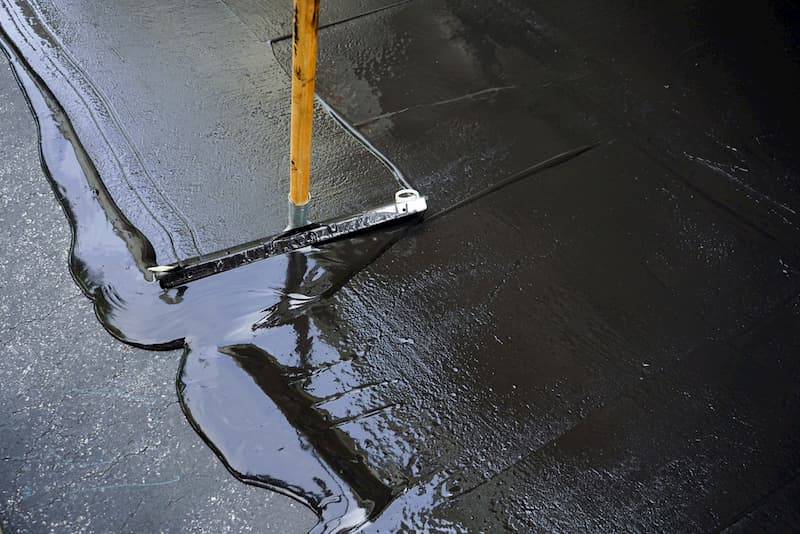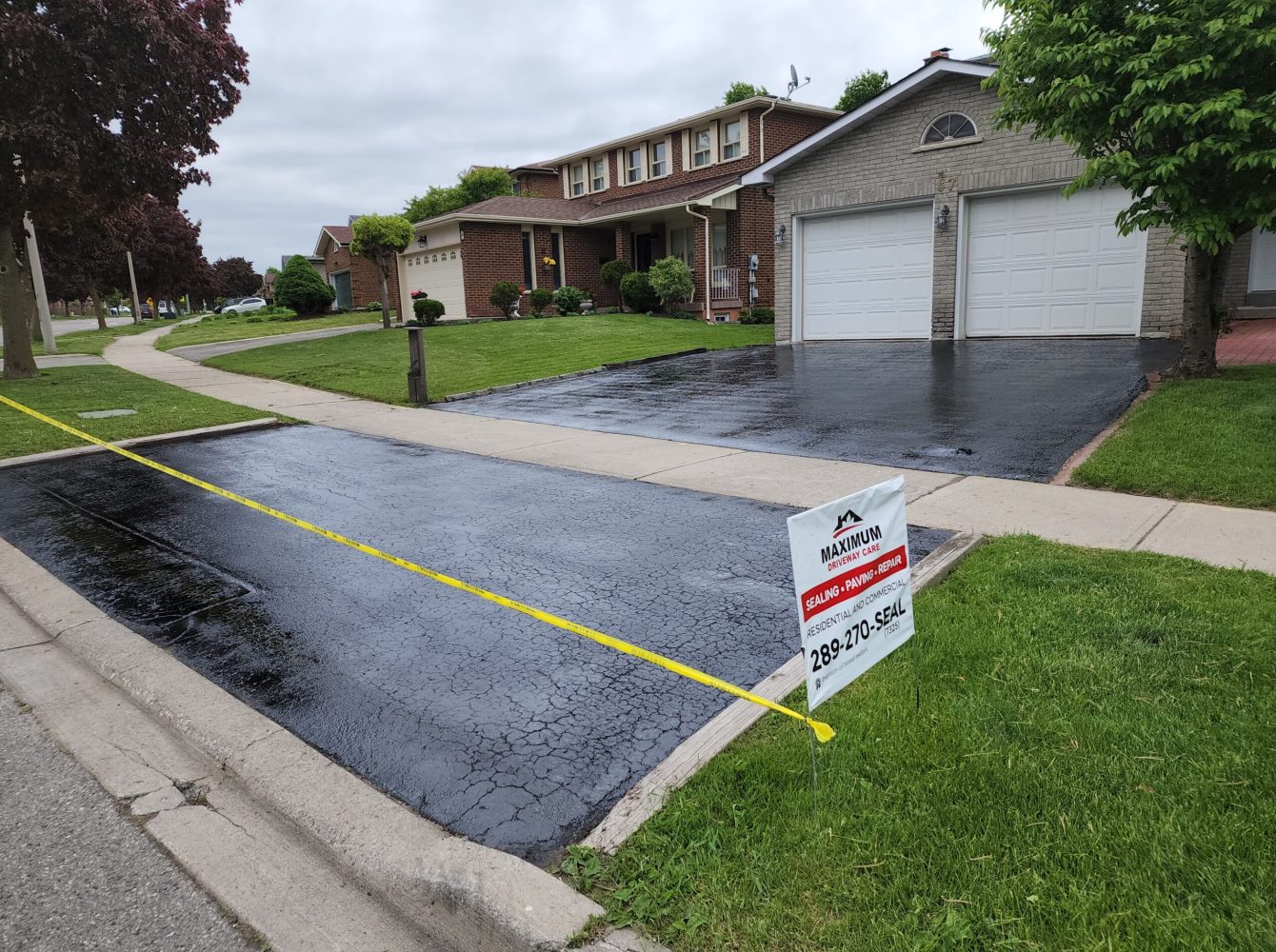Raise Security and Charm: Angled Parking Area Solutions with Asphalt Sealing
Raise Security and Charm: Angled Parking Area Solutions with Asphalt Sealing
Blog Article
Hot Mix Asphalt: A Lasting Solution for Pavement
Warm Mix Asphalt (HMA) has arised as a leading sustainable choice for sidewalk services, offering a myriad of ingenious innovations and environmental benefits. As the need for eco-friendly building and construction methods grows, discovering the nuances of HMA's sustainability can give important insights right into the future of pavement options.
Environmental Advantages of Hot Mix Asphalt

Moreover, Hot Mix Asphalt assists to mitigate city heat island results. Its dark color soaks up sunlight, reducing the quantity of heat mirrored back into the environment compared to lighter-colored pavements. This can lower ambient temperatures in city areas, lowering the demand for cooling and eventually reducing power consumption.
On top of that, Warm Mix Asphalt adds to improved stormwater management. Its porous nature enables water to recharge and infiltrate the sidewalk groundwater products, lowering runoff and the risk of flooding. These environmental benefits make Hot Mix Asphalt a sustainable option for paving roads and highways.
Energy Effectiveness in HMA Production
Is energy efficiency a crucial factor in the manufacturing of Warm Mix Asphalt (HMA)? Energy plays a substantial duty in the production of HMA, impacting both price and ecological sustainability. One essential facet of power efficiency in HMA production is the usage of warm mix asphalt (WMA) innovations.
Additionally, innovations in plant technologies have led to even more energy-efficient HMA production processes. By maximizing power use in HMA manufacturing, the market can lower its carbon impact while keeping top notch sidewalk materials.
Recyclability of Warm Mix Asphalt
The recyclability of Hot Mix Asphalt (HMA) is a critical aspect of its sustainability and lasting environmental effect. HMA is just one of the most recycled materials in the United States, with over 100 million lots of recovered asphalt sidewalk (RAP) being recycled annually in brand-new sidewalk building and construction. Recycling HMA provides a number of environmental benefits, such as minimizing the demand for virgin products, decreasing power consumption throughout production, and decreasing the amount of waste sent to landfills.
The process of reusing HMA entails crushing the existing pavement, visite site crushing it into smaller sized items, and mixing it with new aggregate and asphalt binder to develop a recycled mix. On the whole, the recyclability of HMA plays a substantial function in promoting sustainable practices within the sidewalk sector.

Long-Term Efficiency of HMA
Asphalt sidewalks show sturdiness and durability over a prolonged period, reflecting the lasting efficiency of Warm Mix Asphalt (HMA) The long life of HMA can be attributed to its capability to stand up to hefty web traffic loads, harsh weather, and the results of aging. Researches have actually shown that well-designed and properly constructed HMA sidewalks can last for two decades or even more with regular maintenance. The key to taking full advantage of the long-lasting performance of HMA hinges on making use of high-grade products, complying with best practices in building, and carrying out reliable maintenance strategies. Proper water drainage, regular assessments, and timely repair work are important for preserving the architectural honesty of HMA pavements over time. In addition, innovations in HMA innovation, such as the use of polymer-modified binders and cozy mix asphalt, have further enhanced the longevity and long life of HMA pavements. By focusing on quality construction and upkeep techniques, HMA proceeds to show itself as a affordable and lasting option for lasting pavement infrastructure.

HMA: Sturdiness and Sustainability
Demonstrating both durability and sustainability, Warm Mix Asphalt (HMA) has become a keystone in the construction of long-lasting pavement infrastructures - regrading. HMA's sturdiness stems from its capacity to hold up against heavy lots, severe weather, and high website published here traffic volumes, making it a reputable choice for roads, freeways, and airport terminal paths. The make-up of HMA, which typically includes accumulations, binder, and filler, plays a vital role in improving its long life and resistance to damage
Moreover, HMA's sustainability exists in its recyclability and energy-efficient production process. The capacity to reuse recovered asphalt sidewalk (RAP) in new HMA blends lowers the demand for virgin products and reduces the ecological impact of sidewalk building and construction and upkeep. Additionally, the energy effectiveness of generating HMA exists in its reduced blending temperature levels compared to various other pavement products, leading to lowered power intake and greenhouse gas exhausts.
Conclusion
Finally, hot mix asphalt (HMA) provides a lasting remedy for sidewalk with its eco-friendly qualities. HMA's recyclability, energy effectiveness in production, and long-lasting resilience make it an environment-friendly option for roadway building and construction. By preserving natural deposits, minimizing waste, and decreasing greenhouse gas exhausts, HMA plays a crucial duty in advertising sustainability in framework growth. Its capability to alleviate metropolitan heat island effects further underscores its relevance in developing durable and environmentally aware sidewalk systems.
HMA is one of the most recycled products in the United States, with over 100 million loads of reclaimed asphalt pavement (RAP) being recycled every year in new sidewalk building.The process of reusing HMA involves crushing the existing pavement, squashing it into smaller sized pieces, and blending it with brand-new see post aggregate and asphalt binder to produce a recycled mix.Asphalt pavements show sturdiness and resilience over a prolonged period, showing the long-term efficiency of Hot Mix Asphalt (HMA) Furthermore, developments in HMA modern technology, such as the use of polymer-modified binders and warm mix asphalt, have better boosted the toughness and durability of HMA sidewalks. The capacity to recycle redeemed asphalt pavement (RAP) in new HMA blends reduces the demand for virgin materials and lessens the ecological impact of pavement construction and maintenance.
Report this page